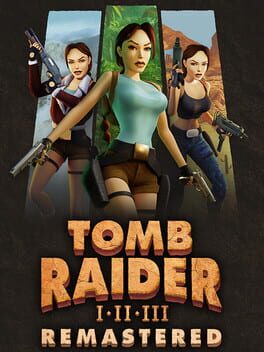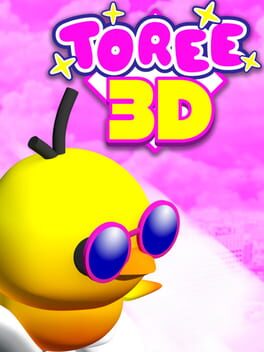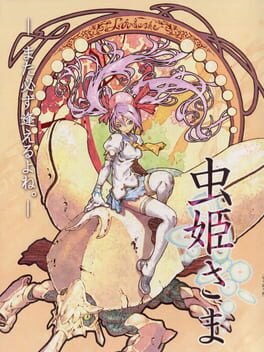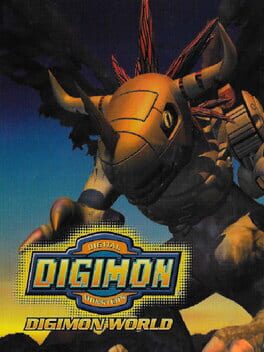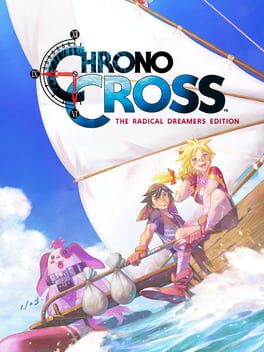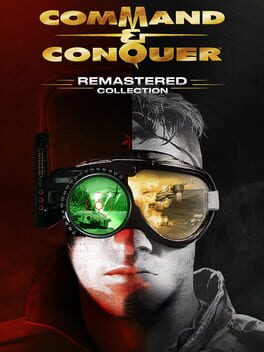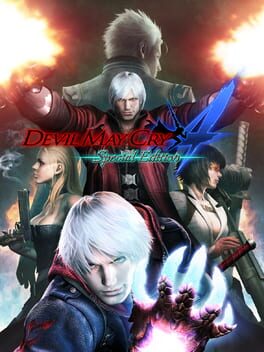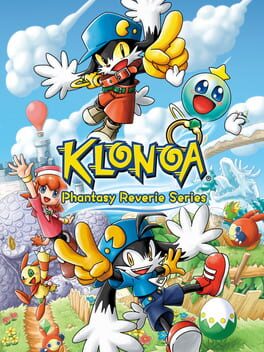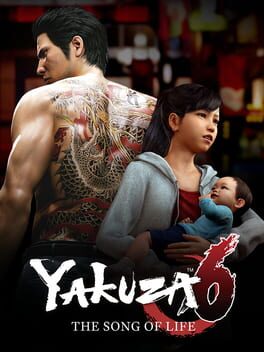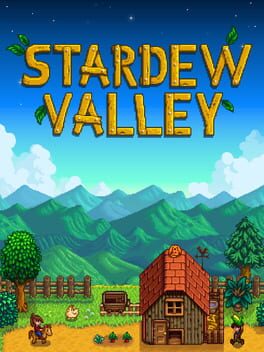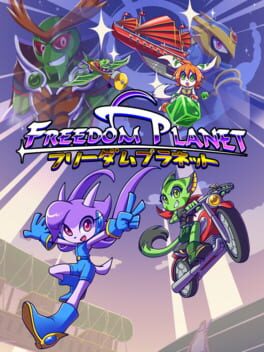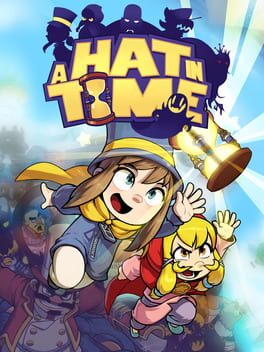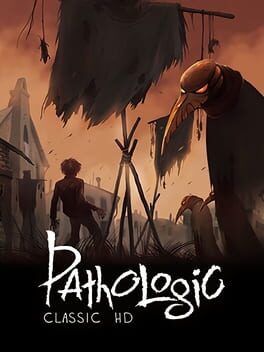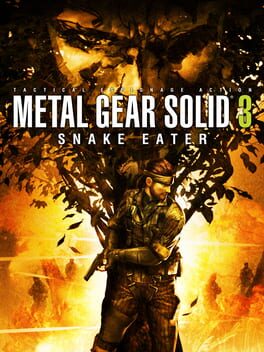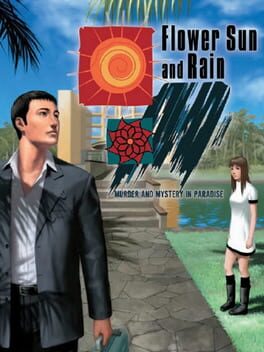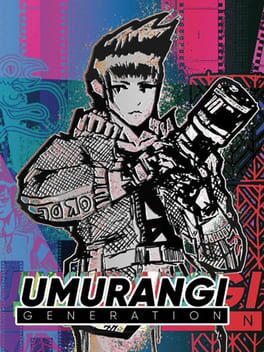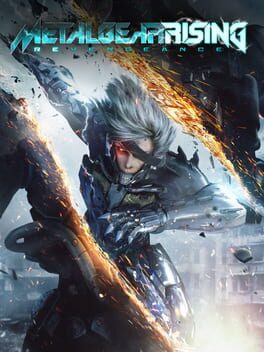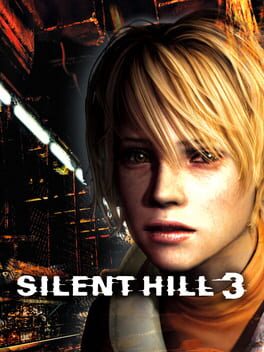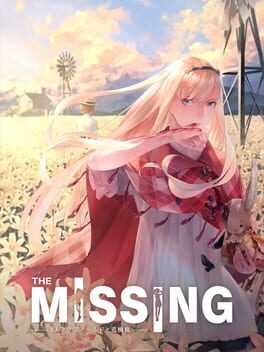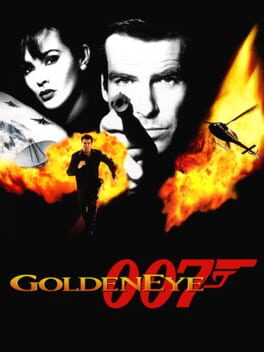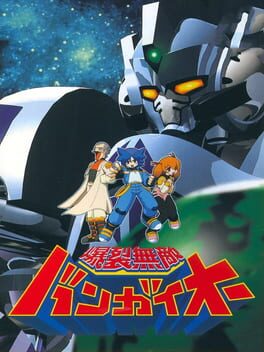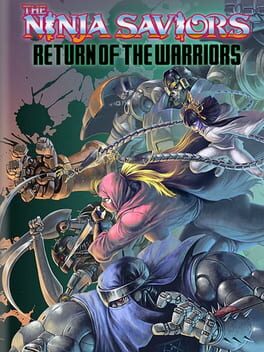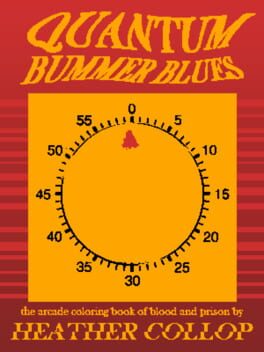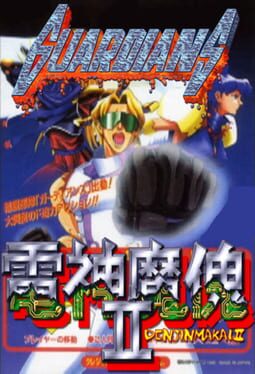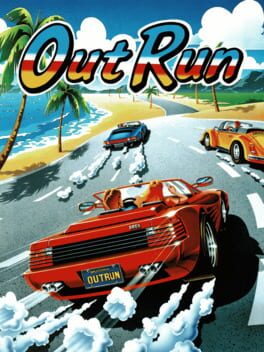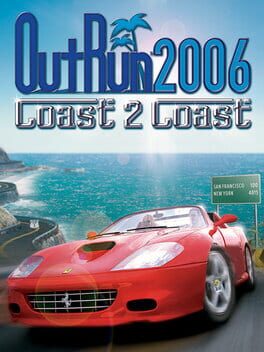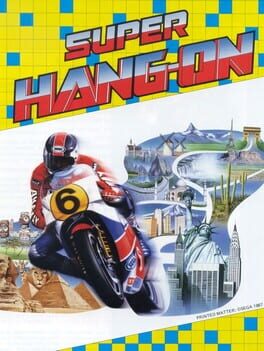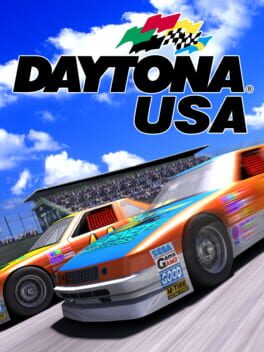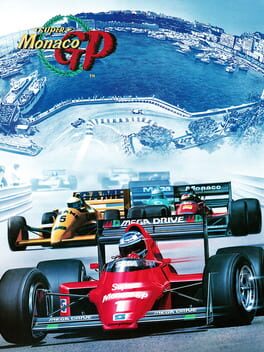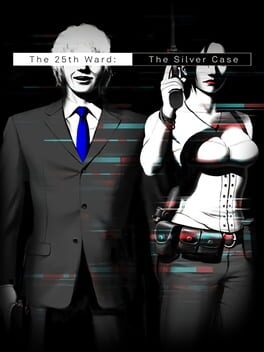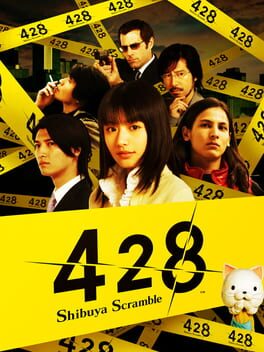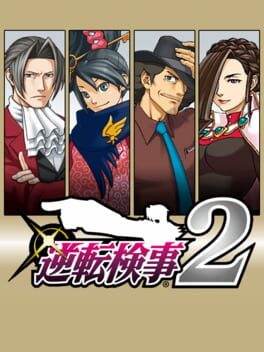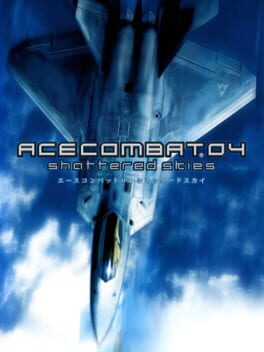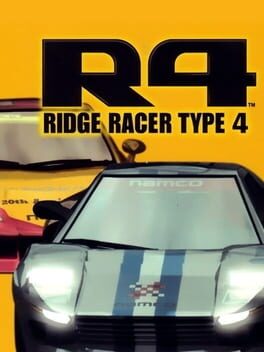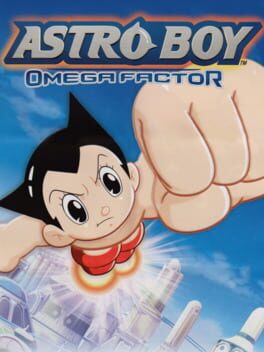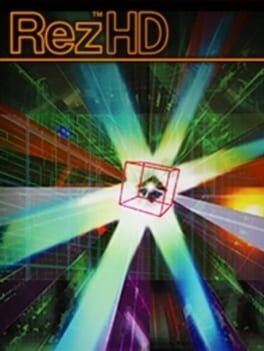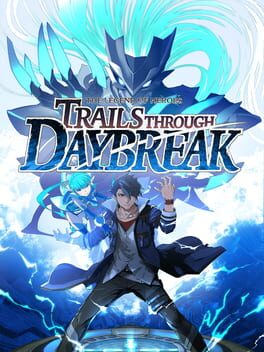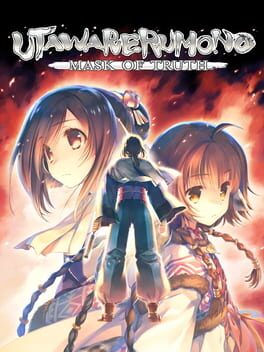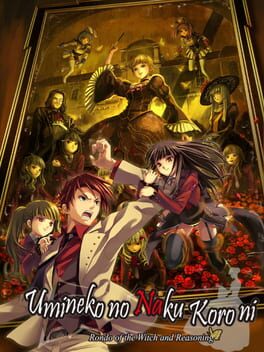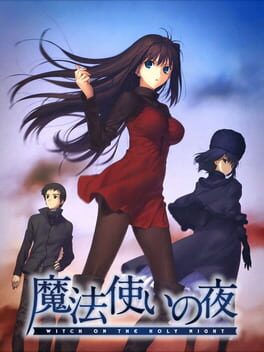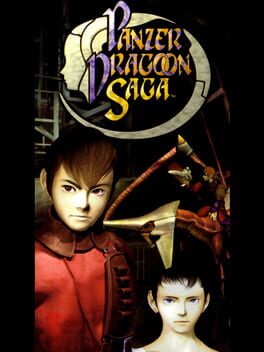ogremode
289 reviews liked by ogremode
God Hand
2006
dog i hate it here so much. i'm minding my own business, poisoning random passerbys with my Pimpy Son Opp, when this guy with a fuck-off arm walks up and starts doing Rising Tackles on my boys. He kicked one of them in the nuts and a crowd cheered. we're in the middle of the desert. I hit him with a club and then he started crying and we all felt really bad. Where's Jagi man. this shit blows, I want to go home.
I'm probably going to repeat a lot of similar points that Larry Davis brought up in his review, so... what he said.
14 years after The Forgotten Sands, Prince of Persia is finally back, and the folks over at Ubisoft Monpellier understood the assignment: crap up good movement and puzzle solving with dreadful combat and an over-reliance on mobs of spongy enemies.
Parrying and punishing is the bread and butter of Sargon's kit, a rhythm you want to maintain to build meter for more devastating abilities, but when you're just trying to get to your next objective or explore some crypt, constantly getting beaned from all sides by low-level goons that have a bafflingly high HP pool gets really annoying. You might think bosses better leverage this system being that they're one-on-one encounters, but most fall into the same rote strategy of playing defensively until they open themselves up for a cinematic counter.
At least one of these bosses actively punishes dynamic play by spamming teleports and parries when the player behaves aggressively, resulting in a fight that requires you sit Sargon in a corner so the boss will fall into a pattern of throwing out the same three attacks, permitting you to plink away at his health at the end of each sequence. I'm pretty sure this isn't an intentional lesson so much as the AI doesn't know how to deal with you remaining still, but I would describe combat as being bizarrely passive despite how much you're given to work with.
The pendulum does eventually swing in the other direction when you gather up enough ingots to upgrade Sargon's weapons, but enemies never quite keep pace with the player's growth, resulting in a game that's entirely too frustrating in the early half and almost comically easy in the second.
And sure, you might argue that a search-action game is all about making the player feel progressively more empowered as they plumb the depths of whatever hostile labyrinth they're trapped in, but almost all the gains Sargon actually makes are bought and paid for with time crystals. In Super Metroid, Samus slowly gains abilities and expands her inventory through exploration. In Symphony of the Night, Alucard can find a variety of capes, armors, and weapons that allows the player to directly build their character. While The Lost Crown's most secluded areas occasionally house a heart container or equipable charm (most of which are borderline useless), they'll more often dead end with 40 crystals and a piece of paper with a full length Backloggd essay written on it -- I ain't reading that, I don't have time! Growth feels far more tied to the economics of the world and what you can afford than it does exploration. Hell, sometimes you'll even go out of your way to reach a secret alcove and find there's nothing at all.
Before I punch out from my shift at the hot take factory, where I work as a foreman to support my factory wife and my 2.5 factory kids, I will say that Lost Crown is a much more enjoyable experience when you decouple yourself from the typical search-action loop of exploring every nook and cranny and instead focus on the main path. There's some genuinely great platforming sequences and puzzles that make good use of Sargon's traversal abilities, and the layout of Mount Qaf is easy to read and navigate your way through thanks to the game setting objective markers and allowing you to photograph areas of interest for quick reference on the map.
The story has its share of contrivances, especially early on, but I did find myself surprisingly invested by the end of the game, and although most characters can be described as "well-meaning but criminally and suicidally stupid," the concept of Mount Qaf existing within a bubble of fractured space and time is enough to carry the narrative whenever the character writing falls short. I really like the idea that every character and NPC is perceiving time differently, some being displaced by decades whereas others are made to exist within a singular moment for eternity.
Lost Crown doesn't stick the landing for me. It gets a lot about the search-action formula wrong, particularly with character growth and incentivizing exploration off the beaten path. The combat is rough and excessive, and sometimes you'll spend ten minutes throwing yourself to a meat grinder trial-and-erroring your way through pattern memorization all for a pair of pants, but there's still something here. Traversal feels good, the visual design is great, and the core loop is satisfying enough to elevate Lost Crown from being a bad game to being perfectly mediocre, maybe even serviceable. In other words, it's a Prince of Persia game.
Gonna buy a shirt that says "I'd rather be playing Touhou Luna Nights."
14 years after The Forgotten Sands, Prince of Persia is finally back, and the folks over at Ubisoft Monpellier understood the assignment: crap up good movement and puzzle solving with dreadful combat and an over-reliance on mobs of spongy enemies.
Parrying and punishing is the bread and butter of Sargon's kit, a rhythm you want to maintain to build meter for more devastating abilities, but when you're just trying to get to your next objective or explore some crypt, constantly getting beaned from all sides by low-level goons that have a bafflingly high HP pool gets really annoying. You might think bosses better leverage this system being that they're one-on-one encounters, but most fall into the same rote strategy of playing defensively until they open themselves up for a cinematic counter.
At least one of these bosses actively punishes dynamic play by spamming teleports and parries when the player behaves aggressively, resulting in a fight that requires you sit Sargon in a corner so the boss will fall into a pattern of throwing out the same three attacks, permitting you to plink away at his health at the end of each sequence. I'm pretty sure this isn't an intentional lesson so much as the AI doesn't know how to deal with you remaining still, but I would describe combat as being bizarrely passive despite how much you're given to work with.
The pendulum does eventually swing in the other direction when you gather up enough ingots to upgrade Sargon's weapons, but enemies never quite keep pace with the player's growth, resulting in a game that's entirely too frustrating in the early half and almost comically easy in the second.
And sure, you might argue that a search-action game is all about making the player feel progressively more empowered as they plumb the depths of whatever hostile labyrinth they're trapped in, but almost all the gains Sargon actually makes are bought and paid for with time crystals. In Super Metroid, Samus slowly gains abilities and expands her inventory through exploration. In Symphony of the Night, Alucard can find a variety of capes, armors, and weapons that allows the player to directly build their character. While The Lost Crown's most secluded areas occasionally house a heart container or equipable charm (most of which are borderline useless), they'll more often dead end with 40 crystals and a piece of paper with a full length Backloggd essay written on it -- I ain't reading that, I don't have time! Growth feels far more tied to the economics of the world and what you can afford than it does exploration. Hell, sometimes you'll even go out of your way to reach a secret alcove and find there's nothing at all.
Before I punch out from my shift at the hot take factory, where I work as a foreman to support my factory wife and my 2.5 factory kids, I will say that Lost Crown is a much more enjoyable experience when you decouple yourself from the typical search-action loop of exploring every nook and cranny and instead focus on the main path. There's some genuinely great platforming sequences and puzzles that make good use of Sargon's traversal abilities, and the layout of Mount Qaf is easy to read and navigate your way through thanks to the game setting objective markers and allowing you to photograph areas of interest for quick reference on the map.
The story has its share of contrivances, especially early on, but I did find myself surprisingly invested by the end of the game, and although most characters can be described as "well-meaning but criminally and suicidally stupid," the concept of Mount Qaf existing within a bubble of fractured space and time is enough to carry the narrative whenever the character writing falls short. I really like the idea that every character and NPC is perceiving time differently, some being displaced by decades whereas others are made to exist within a singular moment for eternity.
Lost Crown doesn't stick the landing for me. It gets a lot about the search-action formula wrong, particularly with character growth and incentivizing exploration off the beaten path. The combat is rough and excessive, and sometimes you'll spend ten minutes throwing yourself to a meat grinder trial-and-erroring your way through pattern memorization all for a pair of pants, but there's still something here. Traversal feels good, the visual design is great, and the core loop is satisfying enough to elevate Lost Crown from being a bad game to being perfectly mediocre, maybe even serviceable. In other words, it's a Prince of Persia game.
Gonna buy a shirt that says "I'd rather be playing Touhou Luna Nights."
For whatever reason, it is apparently a long-standing tradition that Prince of Persia games, despite being mostly known and well-regarded for platforming, must feature combat. From the very first game, it's been an aspect shoehorned in that is always to the game's detriment. At best, it's simply There and unobtrusive (Two Thrones, '08) and at worst, there's way too much of it and it's not fun anyway (Warrior Within). This one goes in the "at worst" pile.
The Lost Crown takes heavy inspiration from character-action games, with launchers, midair combos, parries, etc. It's not a terrible idea, except that by filling every area full of ass holes that are constantly shooting things at you from offscreen, the already sometimes-tedious navigation is made even more irritating. It's bad enough that some areas have almost no fast travel points, forcing you to jump through mazes of spikes every time you want to go anywhere. The game also has the now-standard for the genre reverse difficulty curve, where early on enemies are damage sponges that delete your life bar in 2 hits, but by about a third through the game nothing poses a legitimate threat anymore.
This is interesting to me, because the game Lost Crown takes the most inspiration from is clearly Blasphemous. You can obtain a bunch of equippable amulets that function similarly to the figurines in Blasphemous (though dumbed-down and without the interesting synergies), it has health potions that refresh at save points, and bosses are often teleporting around and shooting lasers all over the damn place.
But The Lost Crown has one glaring issue in particular, and it's inexcusable for a search action game: exploration often feels like a waste of time. So many secret areas I found just led to dead ends with a couple of stupid-ass crystals in them. Oh boy! I can use these to upgrade amulets, except there are only 3 or 4 of them actually worth using. And they take several hundred crystals to upgrade, while most of these Secret Areas give you like... 30. You can get that many from killing 2 or 3 enemies. Sure, in Metroid you might just find a missile tank or something, but hey, at least then you can hold more missiles! These crystals stopped doing jack crap about halfway through the game! Or you might find a lame recolor skin after suffering through a particularly harrowing platforming sequence. Because everyone wants a lilac-colored Sargon, apparently. Every time this happened, it felt like the game had spat in my eye and kicked me in the nuts, and it really destroyed my enjoyment overall.
The platforming mostly works fine, though it can glitch out, like the rest of the game. In particular, air-dashing onto the corner of a ledge often makes Sargon get stuck on it for a second, jittering around like he's in Jacob's Ladder. Oh, and those other glitches? Be prepared for softlocks, missing geometry, Sargon floating around on the ground unable to jump, and more. This thing needed a bit longer in the oven.
The plot is pretty stupid. Sargon's fellow Immortals act like total dipshits for most of the game. I'm not sure why every PoP since Sands of Time has to be about Time, with the exception of the unfairly maligned 2008 reboot, but there is some cool stuff in here. There's a weird little old man who sounds like Richard Ayoade. That's neat.
I feel like people are cutting this game a lot of slack because it's a Ubisoft game that's not a 200 hour map-vomit clusterfuck. And, to its credit, it does have two great quality of life ideas that every game in the genre should have: the ability to take screenshots that then appear on the map, and indications of where nearby save stations are. It's too bad that everything else here misses the mark.
Hey, not everything can be as good as Touhou Luna Nights.
5/10
The Lost Crown takes heavy inspiration from character-action games, with launchers, midair combos, parries, etc. It's not a terrible idea, except that by filling every area full of ass holes that are constantly shooting things at you from offscreen, the already sometimes-tedious navigation is made even more irritating. It's bad enough that some areas have almost no fast travel points, forcing you to jump through mazes of spikes every time you want to go anywhere. The game also has the now-standard for the genre reverse difficulty curve, where early on enemies are damage sponges that delete your life bar in 2 hits, but by about a third through the game nothing poses a legitimate threat anymore.
This is interesting to me, because the game Lost Crown takes the most inspiration from is clearly Blasphemous. You can obtain a bunch of equippable amulets that function similarly to the figurines in Blasphemous (though dumbed-down and without the interesting synergies), it has health potions that refresh at save points, and bosses are often teleporting around and shooting lasers all over the damn place.
But The Lost Crown has one glaring issue in particular, and it's inexcusable for a search action game: exploration often feels like a waste of time. So many secret areas I found just led to dead ends with a couple of stupid-ass crystals in them. Oh boy! I can use these to upgrade amulets, except there are only 3 or 4 of them actually worth using. And they take several hundred crystals to upgrade, while most of these Secret Areas give you like... 30. You can get that many from killing 2 or 3 enemies. Sure, in Metroid you might just find a missile tank or something, but hey, at least then you can hold more missiles! These crystals stopped doing jack crap about halfway through the game! Or you might find a lame recolor skin after suffering through a particularly harrowing platforming sequence. Because everyone wants a lilac-colored Sargon, apparently. Every time this happened, it felt like the game had spat in my eye and kicked me in the nuts, and it really destroyed my enjoyment overall.
The platforming mostly works fine, though it can glitch out, like the rest of the game. In particular, air-dashing onto the corner of a ledge often makes Sargon get stuck on it for a second, jittering around like he's in Jacob's Ladder. Oh, and those other glitches? Be prepared for softlocks, missing geometry, Sargon floating around on the ground unable to jump, and more. This thing needed a bit longer in the oven.
The plot is pretty stupid. Sargon's fellow Immortals act like total dipshits for most of the game. I'm not sure why every PoP since Sands of Time has to be about Time, with the exception of the unfairly maligned 2008 reboot, but there is some cool stuff in here. There's a weird little old man who sounds like Richard Ayoade. That's neat.
I feel like people are cutting this game a lot of slack because it's a Ubisoft game that's not a 200 hour map-vomit clusterfuck. And, to its credit, it does have two great quality of life ideas that every game in the genre should have: the ability to take screenshots that then appear on the map, and indications of where nearby save stations are. It's too bad that everything else here misses the mark.
Hey, not everything can be as good as Touhou Luna Nights.
5/10
For today’s review, I am gonna spare you all from my usual terrible intros, because before playing this game, I had absolutely no clue that this thing even existed. I was just casually scrolling around on the internet, looking for a game to play before I had to go back to the hellscape I call my own life, and I found this game called Hagane - The Final Conflict, and it sounded like it was gonna be the most generic thing ever. I mean, that is the impression that I got just from looking at both the name and cover of the game, which look like something most people would potentially pass up on renting whenever they would be strolling through their local Blockbuster. But hey, it was probably gonna be better then the next two games that I am gonna be reviewing after this, so I figured I would go ahead and give it a shot to see how it was.
When I did start up the game though, I then realized just from taking one look at the stage screen and listening to the music that I had actually seen this game before, but it had been a very long time since I had seen it. All I remember from seeing it is that it was apparently incredibly difficult, which did make me somewhat nervous to continue going, but not only did I find that the difficulty wasn’t really all that bad, but also that this game… actually kinda fucking rules. It was definitely lacking in several areas, which may or may not have contributed to it not being commonly known, but even ignoring those few factors, I had a great time playing this game, and I would easily say it is one of the best hidden gems that I have played from the SNES line-up.
The story is fairly simple for a game that has this setting and title, where a ninja clan known as the Fuma clan is attacked by the evil Koma clan, with them killing most of their members and stealing their most sacred treasure, the Holy Grail. However, in the depths of the chaos, one man by the name of Hagane survived the attack, and seeing this, a mysterious figure known as Momochi took him and brought him back to full strength, transforming his body to that of a cyborg with superior strength, speed, and intelligence, while still keeping his brain intact. With these new enhancements at his disposal, Hagane then vows to take revenge on the Koma clan, setting out to destroy them all and to reclaim the Holy Grail. It is a pretty basic revenge plot, and one that you won’t be getting if you just rely on the game’s cinematics, but it is good enough for those that are wanting to know a little more about what is going on and why your main character is so cool.
The graphics are… good enough, not looking too different from plenty of other games of the era that share a similar setting and premise, but it is impressive enough for the time, especially with the cutscenes, the music is… also good enough, having plenty of decent tracks for when you will be running through these levels and slicing down everyone you see, but nothing stuck out to me as being really great or memorable, the control is incredible, feeling just as snappy, responsive, and fast as you would want a game like this to be, even if the jumping can take a little getting used to at points, and the gameplay is also just as fun, fast, and snappy, while also making sure to challenge you in plenty of areas to encourage you to keep going.
The game is a 2D action platformer, where you take control of Hagane, go through a set of five different stages, each having multiple sections that will have you going through several different locations to reach your goal, slash through plenty of different enemies, big or small, using whatever different weapons you wish to use while swapping out between them at any point, gather plenty of ammunition for said weapons, health pickups, 1-ups, and items that can expand how much health you have to help you out for the journey ahead, and take on plenty of big bad bosses, who were actually not that hard to take on, while still providing a decent enough challenge to where it didn’t feel like I was kicking around a toddler for a minute or so before moving on to kicking around the next toddler. For those of you who have played other similar action platformers in the past, such as Ninja Gaiden or Shinobi, then this kind of gameplay style should be very familiar to you, and also for those of you who have played those two games, you would know exactly what makes one of these games work, and let me tell you, Hagane: The Final Conflict works REALLY well, and was great to play from start to finish.
If you couldn’t tell already at this point, this game is an action platformer themed around ninjas, and if you are asking me, one of the most important things about a platformer surrounding ninjas is that the movement must be quick, and the combat must be fast and satisfying. I mean, that’s what ninjas are all about, right? Ninja Gaiden and Shinobi both managed to accomplish this by giving the player plenty of speed to work with and a satisfying basic attack to use to slice down your enemies, while making sure to kick your teeth in every once in a while just to remind you what game you’re playing, ya idiot. This game manages to do all of that and then some, providing very fast combat, a vast arrangement of weapons for you to choose from, plenty of different platforming challenges to face using different kinds of abilities, and different types of gameplay segments to make sure that the gameplay feels fresh and interesting the more you go through it.
Not to mention, the weapons that do get to use throughout the journey are very helpful. I mainly just stuck with the sword for most of the journey, because my inner Ninja Gaiden and Strider wouldn’t let me switch to anything else for a fraction of a second, but at points, it was nice to see what other weapons could do, such as a shuriken that you can throw at enemies and grenades that can deal some pretty explosive damage. In addition, there was also the chain, a weapon that could not only be used to hurt enemies from a distance, but also allows you to reach higher areas when simple jumps just won’t do the trick, which I used towards my advantage a total of… one time, but hey, it was neat to see it there. Mix all that with a special screen-nuke attack that can come in handy when you are in a pinch, and you have an arsenal that is both versatile and entertaining to mess around with, which is the best possible kind of arsenal that you can have in any game like this.
So nothing about the gameplay or difficulty stood out to me as anything to complain about, because while it was challenging in many areas and some of the platforming could’ve been handled a bit better, it wasn’t enough to where I ended up getting mad or too aggravated, and I managed to have a good time with it. My one major gripe with the game, ultimately, would have to be with its presentation. Now, if you have been reading these reviews for a while, you would know that I prioritize gameplay over everything else, because in most circumstances, if the game isn’t fun to play, then that kinda defeats the whole purpose of me liking it or playing it at the end of the day. However, I still do think that presentation plays a big factor into how much one can enjoy a game, and when it comes to Hagane, it is one of the most generic looking and sounding games from this era. Yeah, it still looks and sounds pretty good for the era, but none of it stands out as being anything original or eye-catching, looking too much like any other ninja-themed game on the market, hence why most people probably didn’t own it back in the day, and why it now costs about an arm and a leg for a used copy on eBay. It isn’t enough to where it makes the gameplay any worse, but it is something to bring up nonetheless.
Overall, despite its bland visuals and soundtrack, this still remains as one of the best hidden gems that I have ever gotten to experience from the SNES library, giving the right amount of satisfying combat and platforming elements you could want from a ninja game, keeping the challenge high but not to the point of being unfair, and being short enough to where you can breeze through it in an hour or so and feel satisfied by what you had just experienced. I would definitely recommend it for those who are big fans of other titles like Ninja Gaiden or Shinobi, as well as those who are looking for something new to play for your SNES system, because I would definitely say it is worth loading up on your SNES emulator and giving a shot… cause you probably won’t be buying an actual physical copy of it for yourself, unless you have hundreds of dollars just collecting dust somewhere. It does suck though that this game never did get any kind of continuation or follow-up, cause I would’ve definitely loved to see a sequel come along to expand on what this game does, or even a hack-’n-slash reboot in the same vein as what Ninja Gaiden or Shinobi did. But hey, a man can dream, I guess…
Game #560
When I did start up the game though, I then realized just from taking one look at the stage screen and listening to the music that I had actually seen this game before, but it had been a very long time since I had seen it. All I remember from seeing it is that it was apparently incredibly difficult, which did make me somewhat nervous to continue going, but not only did I find that the difficulty wasn’t really all that bad, but also that this game… actually kinda fucking rules. It was definitely lacking in several areas, which may or may not have contributed to it not being commonly known, but even ignoring those few factors, I had a great time playing this game, and I would easily say it is one of the best hidden gems that I have played from the SNES line-up.
The story is fairly simple for a game that has this setting and title, where a ninja clan known as the Fuma clan is attacked by the evil Koma clan, with them killing most of their members and stealing their most sacred treasure, the Holy Grail. However, in the depths of the chaos, one man by the name of Hagane survived the attack, and seeing this, a mysterious figure known as Momochi took him and brought him back to full strength, transforming his body to that of a cyborg with superior strength, speed, and intelligence, while still keeping his brain intact. With these new enhancements at his disposal, Hagane then vows to take revenge on the Koma clan, setting out to destroy them all and to reclaim the Holy Grail. It is a pretty basic revenge plot, and one that you won’t be getting if you just rely on the game’s cinematics, but it is good enough for those that are wanting to know a little more about what is going on and why your main character is so cool.
The graphics are… good enough, not looking too different from plenty of other games of the era that share a similar setting and premise, but it is impressive enough for the time, especially with the cutscenes, the music is… also good enough, having plenty of decent tracks for when you will be running through these levels and slicing down everyone you see, but nothing stuck out to me as being really great or memorable, the control is incredible, feeling just as snappy, responsive, and fast as you would want a game like this to be, even if the jumping can take a little getting used to at points, and the gameplay is also just as fun, fast, and snappy, while also making sure to challenge you in plenty of areas to encourage you to keep going.
The game is a 2D action platformer, where you take control of Hagane, go through a set of five different stages, each having multiple sections that will have you going through several different locations to reach your goal, slash through plenty of different enemies, big or small, using whatever different weapons you wish to use while swapping out between them at any point, gather plenty of ammunition for said weapons, health pickups, 1-ups, and items that can expand how much health you have to help you out for the journey ahead, and take on plenty of big bad bosses, who were actually not that hard to take on, while still providing a decent enough challenge to where it didn’t feel like I was kicking around a toddler for a minute or so before moving on to kicking around the next toddler. For those of you who have played other similar action platformers in the past, such as Ninja Gaiden or Shinobi, then this kind of gameplay style should be very familiar to you, and also for those of you who have played those two games, you would know exactly what makes one of these games work, and let me tell you, Hagane: The Final Conflict works REALLY well, and was great to play from start to finish.
If you couldn’t tell already at this point, this game is an action platformer themed around ninjas, and if you are asking me, one of the most important things about a platformer surrounding ninjas is that the movement must be quick, and the combat must be fast and satisfying. I mean, that’s what ninjas are all about, right? Ninja Gaiden and Shinobi both managed to accomplish this by giving the player plenty of speed to work with and a satisfying basic attack to use to slice down your enemies, while making sure to kick your teeth in every once in a while just to remind you what game you’re playing, ya idiot. This game manages to do all of that and then some, providing very fast combat, a vast arrangement of weapons for you to choose from, plenty of different platforming challenges to face using different kinds of abilities, and different types of gameplay segments to make sure that the gameplay feels fresh and interesting the more you go through it.
Not to mention, the weapons that do get to use throughout the journey are very helpful. I mainly just stuck with the sword for most of the journey, because my inner Ninja Gaiden and Strider wouldn’t let me switch to anything else for a fraction of a second, but at points, it was nice to see what other weapons could do, such as a shuriken that you can throw at enemies and grenades that can deal some pretty explosive damage. In addition, there was also the chain, a weapon that could not only be used to hurt enemies from a distance, but also allows you to reach higher areas when simple jumps just won’t do the trick, which I used towards my advantage a total of… one time, but hey, it was neat to see it there. Mix all that with a special screen-nuke attack that can come in handy when you are in a pinch, and you have an arsenal that is both versatile and entertaining to mess around with, which is the best possible kind of arsenal that you can have in any game like this.
So nothing about the gameplay or difficulty stood out to me as anything to complain about, because while it was challenging in many areas and some of the platforming could’ve been handled a bit better, it wasn’t enough to where I ended up getting mad or too aggravated, and I managed to have a good time with it. My one major gripe with the game, ultimately, would have to be with its presentation. Now, if you have been reading these reviews for a while, you would know that I prioritize gameplay over everything else, because in most circumstances, if the game isn’t fun to play, then that kinda defeats the whole purpose of me liking it or playing it at the end of the day. However, I still do think that presentation plays a big factor into how much one can enjoy a game, and when it comes to Hagane, it is one of the most generic looking and sounding games from this era. Yeah, it still looks and sounds pretty good for the era, but none of it stands out as being anything original or eye-catching, looking too much like any other ninja-themed game on the market, hence why most people probably didn’t own it back in the day, and why it now costs about an arm and a leg for a used copy on eBay. It isn’t enough to where it makes the gameplay any worse, but it is something to bring up nonetheless.
Overall, despite its bland visuals and soundtrack, this still remains as one of the best hidden gems that I have ever gotten to experience from the SNES library, giving the right amount of satisfying combat and platforming elements you could want from a ninja game, keeping the challenge high but not to the point of being unfair, and being short enough to where you can breeze through it in an hour or so and feel satisfied by what you had just experienced. I would definitely recommend it for those who are big fans of other titles like Ninja Gaiden or Shinobi, as well as those who are looking for something new to play for your SNES system, because I would definitely say it is worth loading up on your SNES emulator and giving a shot… cause you probably won’t be buying an actual physical copy of it for yourself, unless you have hundreds of dollars just collecting dust somewhere. It does suck though that this game never did get any kind of continuation or follow-up, cause I would’ve definitely loved to see a sequel come along to expand on what this game does, or even a hack-’n-slash reboot in the same vein as what Ninja Gaiden or Shinobi did. But hey, a man can dream, I guess…
Game #560
Persona 3 Reload
2024
Memento mori -- remember, you will not have enough time to complete all your Social Links if you focus on the old couple and their stupid persimmon tree the second you start the game. Do any of these kids even go to school!?
Apologies to FES devotees, but the "Persona 5-fication" of Persona 3 has, in my eyes, been nothing but a net gain. Sure, it's upsetting that the only other legally accessible version of Persona 3 is a ho-hum port of a compromised portable release, but I'm no stranger to the base game, and when stacking it up side-by-side with Reload, it's hard to not internalize the remake as being the superior way to play the game.
Pretty much every facet of the original is improved or otherwise preserved, and nothing has been downscaled or infringed upon in a manner I would view as harmful. That extends to giving the player direct control over their party, a choice that was originally made to suit Persona 3's themes of communication and bonding by treating each member of SEES as their own individual with their own will. You could largely avoid Mitsuru's habitual casting of Marin Karin by engaging with command presets, my issue is not with the AI. I just think having input over 25% of my team in battle makes the game a little too passive and boring. Well, not anymore. Now I have total control, me, and I'm using my newfound agency to... habitually cast Marin Karin-- wait what the hell
An expanded list of spells and abilities adds a lot more variety to combat, and having more input over how your Personas are built permits more strategic planning over the original's randomized inheritance. All quality-of-life changes that are more or less standard parts of the modern SMT experience, effectively bringing Persona 3 on par with Persona 5 and Shin Megami Tensei V. It is likewise as easy as those games, but being accessible to new audiences isn't necessarily a bad thing. I opted to play through Reload on hard and found the difficulty curve to be more enjoyable this way, though by the time you reach the end game you'll still likely be overpowered. Armageddon is basically the "bully The Reaper" button, and I feel a little bad about it, but that's free EXP so what're you gonna do?
Even the individual blocks of Tartarus, Persona 3's massive procedurally generated labyrinth, are fleshed out in a way that makes navigating less rote and tiresome... though it doesn't completely alleviate some of the tedium. This is perhaps one area where Reload is a bit too slavish to the original game. Enemy designs are turned over and recycled constantly, and the limited number of blocks ensures that even though the geometry is more varied, you'll still probably get sick of exploring before reaching a border floor.
Though I've seen people upset that Reload recasts everyone (except Tara Platt, who apparently had the one unassailable performance), I do think the new cast is excellent, and emotional beats that I found affecting when I played the original game were even more impactful despite anticipating them thanks in large part to better voice direction, more emotive character models, and more dynamic cinematography. I've seen mixed opinions on the soundtrack and changes to Persona 3's aesthetic, but I'm way into all of it. These are my favorite versions of familiar songs, I think the character portraits are a clear step up and I adore the hard lines segmenting areas of shading, I am 1,000% down with the water theming in the menus, and I think the new SEES uniforms are great and actually make the party feel like a well-backed force.
I also have nothing but praise for the new Not S. Links Reload adds, which provides the male members of SEES additional screentime for their individual stories to develop. I think this helps bond the player with each member of the core party even more than the original did, something that Persona 3's two sequels got right by giving each member their own dedicated Social Links. Strega and their ideology are also given a greater amount of time to develop, which helps build them as a credible threat and enhances their presence in the story.However, I must dock points for not being able to date Takaya, I can fix him
Reload might be me at my most defensive of remakes, and at my most insistent that changing material is not inherently bad. The few ways in which Reload does lack is still a noted step up from the original, and the content which is outright excluded is material I didn't care about anyway (I think The Answer is the closest any expanded content has come to essentially being an IGN "ending explained!" article, and unfathomably boring besides.) That said, I think it's possible to feel this way about Reload and still lament the fact that the original game is only accessible through piracy or by overpaying on the aftermarket, and that even more Persona 3 media is outright lost to time.
Apologies to FES devotees, but the "Persona 5-fication" of Persona 3 has, in my eyes, been nothing but a net gain. Sure, it's upsetting that the only other legally accessible version of Persona 3 is a ho-hum port of a compromised portable release, but I'm no stranger to the base game, and when stacking it up side-by-side with Reload, it's hard to not internalize the remake as being the superior way to play the game.
Pretty much every facet of the original is improved or otherwise preserved, and nothing has been downscaled or infringed upon in a manner I would view as harmful. That extends to giving the player direct control over their party, a choice that was originally made to suit Persona 3's themes of communication and bonding by treating each member of SEES as their own individual with their own will. You could largely avoid Mitsuru's habitual casting of Marin Karin by engaging with command presets, my issue is not with the AI. I just think having input over 25% of my team in battle makes the game a little too passive and boring. Well, not anymore. Now I have total control, me, and I'm using my newfound agency to... habitually cast Marin Karin-- wait what the hell
An expanded list of spells and abilities adds a lot more variety to combat, and having more input over how your Personas are built permits more strategic planning over the original's randomized inheritance. All quality-of-life changes that are more or less standard parts of the modern SMT experience, effectively bringing Persona 3 on par with Persona 5 and Shin Megami Tensei V. It is likewise as easy as those games, but being accessible to new audiences isn't necessarily a bad thing. I opted to play through Reload on hard and found the difficulty curve to be more enjoyable this way, though by the time you reach the end game you'll still likely be overpowered. Armageddon is basically the "bully The Reaper" button, and I feel a little bad about it, but that's free EXP so what're you gonna do?
Even the individual blocks of Tartarus, Persona 3's massive procedurally generated labyrinth, are fleshed out in a way that makes navigating less rote and tiresome... though it doesn't completely alleviate some of the tedium. This is perhaps one area where Reload is a bit too slavish to the original game. Enemy designs are turned over and recycled constantly, and the limited number of blocks ensures that even though the geometry is more varied, you'll still probably get sick of exploring before reaching a border floor.
Though I've seen people upset that Reload recasts everyone (except Tara Platt, who apparently had the one unassailable performance), I do think the new cast is excellent, and emotional beats that I found affecting when I played the original game were even more impactful despite anticipating them thanks in large part to better voice direction, more emotive character models, and more dynamic cinematography. I've seen mixed opinions on the soundtrack and changes to Persona 3's aesthetic, but I'm way into all of it. These are my favorite versions of familiar songs, I think the character portraits are a clear step up and I adore the hard lines segmenting areas of shading, I am 1,000% down with the water theming in the menus, and I think the new SEES uniforms are great and actually make the party feel like a well-backed force.
I also have nothing but praise for the new Not S. Links Reload adds, which provides the male members of SEES additional screentime for their individual stories to develop. I think this helps bond the player with each member of the core party even more than the original did, something that Persona 3's two sequels got right by giving each member their own dedicated Social Links. Strega and their ideology are also given a greater amount of time to develop, which helps build them as a credible threat and enhances their presence in the story.
Reload might be me at my most defensive of remakes, and at my most insistent that changing material is not inherently bad. The few ways in which Reload does lack is still a noted step up from the original, and the content which is outright excluded is material I didn't care about anyway (I think The Answer is the closest any expanded content has come to essentially being an IGN "ending explained!" article, and unfathomably boring besides.) That said, I think it's possible to feel this way about Reload and still lament the fact that the original game is only accessible through piracy or by overpaying on the aftermarket, and that even more Persona 3 media is outright lost to time.
At the time of my review I have completed Tomb Raider 1 and 2 in their entirety and am about to start on III. So far I am incredibly satisfied with this collection, as it makes my favorite game series instantly playable without having to deal with the nasty ass PS1 load times or the incredible flimsiness of the PC Ports. Unfortunately, for as long as they made me wait for this thing I'm kind of stunned at how bare bones the whole thing really is.
I want to state first and foremost that the use of A.I artwork is deplorable. I understand this game was no doubt made with a woeful budget by an overworked team, so I'm going to direct my anger more towards the publisher for not giving these games the respect they deserve to have a proper art team remastering the visuals. As it stands, the remastered visuals largely clash with the original artistic intent, don't line up properly along the grids, and generally look cheaper than the original's, as the original game was textured by artists and not a piece of shit A.I.
I am also annoyed at the OG visuals having a frame cap on them, allegedly due to animations being locked to 30 for the old visuals. Even though there are PC Ports available right now that have those same visuals at 60 FPS. There is no reason these games should be stuck at 30 FPS, unless the Switch was having too much trouble running these games, which I would believe.
I also lament the loss of save crystals, which I hypothesized could have been a fun difficulty adjuster for long-time fans of the series, as the save crystals made Tomb Raider 1 and 3 very intense games when you can't save scum through them. Tomb Raider 2 is borderline impossible without save scumming so there no change there.
I think the asking price for some fantastic games is worth it, even though I resent the business practices being used within the package. I also don't anticipate all the terrible discussion we are in for about how these games aged by guys who are obsessed with fucking Pokemon or whatever. If you enjoy these types of games there is a nice handy package here to play them, which honestly, is what I've been dying for for years.
I want to state first and foremost that the use of A.I artwork is deplorable. I understand this game was no doubt made with a woeful budget by an overworked team, so I'm going to direct my anger more towards the publisher for not giving these games the respect they deserve to have a proper art team remastering the visuals. As it stands, the remastered visuals largely clash with the original artistic intent, don't line up properly along the grids, and generally look cheaper than the original's, as the original game was textured by artists and not a piece of shit A.I.
I am also annoyed at the OG visuals having a frame cap on them, allegedly due to animations being locked to 30 for the old visuals. Even though there are PC Ports available right now that have those same visuals at 60 FPS. There is no reason these games should be stuck at 30 FPS, unless the Switch was having too much trouble running these games, which I would believe.
I also lament the loss of save crystals, which I hypothesized could have been a fun difficulty adjuster for long-time fans of the series, as the save crystals made Tomb Raider 1 and 3 very intense games when you can't save scum through them. Tomb Raider 2 is borderline impossible without save scumming so there no change there.
I think the asking price for some fantastic games is worth it, even though I resent the business practices being used within the package. I also don't anticipate all the terrible discussion we are in for about how these games aged by guys who are obsessed with fucking Pokemon or whatever. If you enjoy these types of games there is a nice handy package here to play them, which honestly, is what I've been dying for for years.
Toree 3D
2021
Ice-cream duck unfairly named after Tories loses their cone to Insert Itch.io Scaryguy Here and ends up becoming the new Ninpen Manmaru for half an hour, 10/10 gg ez
The slow but steady low-poly revival in this industry, starting around a decade ago and now flourishing with notables like A Short Hike and Signalis, has had its share of wannabe mascots. Everyone from the heroine of Lunistice to Haunted PS1's garbed skeleton has auditioned for the role, and Toree's no different. This game's developer, Siactro, has made a small stable of mascots already, all of them suspiciously cute, identifiable, and resalable in today's nostalgia market. Disposable heroes are always in vogue, just easier to sugarcoat when hidden behind the veneer of aesthetic authenticity. So it goes. Toree 3D is exactly the kind of small, pleasing half-hour snack that game jams are known for, previously the domain of classic Flash or Shockwave releases. It's very easy to replay and a worthy title despite its shallowness. If I ain't seeing Fangamer merch for this in a year or so, then I'm going to be very confused.
Our premise doesn't get much simpler: you play the titular bird thing, flightless and defenseless save for a double jump and dash. All the player's worried about is getting from point A to B, either with all the star pickups or the fastest time possible to hit that top level rank. Toree 3D nails almost all its basics, from intuitive controls to reproducible physics and scenarios. I know, for instance, that airborne momentum is a constant, which makes jumping across icy platforms that much trickier. A lack of auto-adjusting camera means you'll need to force center or move the right stick more often than should feel necessary, though. This degree of polish is easier to achieve nowadays thanks to widely-known tricks and prefabs in middleware engines like Unity, but it still takes work and testing. So I can't hold anything against Siactro for making a solid platformer loop, one which can't rely on much content or gimmicks to distract from potentially poor playability.
Make no mistake, however. Toree 3D is proud to be derivative, following not just one but two social media bandwagons. Why develop a more distinct identity for this avian anybody and the world they're exploring when you can just slap that low-res filter atop what feel like prototype assets? And why not hastily add a so-light-it's-nothing horror/spooky theme to the opening and final stages, just so it can technically qualify alongside the other Haunted PS1 jam entries? Again, I can't blame Siactro for making these savvy decisions. They're smart compromises to spread the game way farther on Twitter, Discord, Tumblr, Backloggd, etc. than was once possible. I'm a sucker for low-poly art in general, enough to lament its popularization as a micro-trend that'll risks being recycled into meaninglessness. For 1 buck, a mini foray into this style cost me practically nothing and offered so much in return.
All nine levels are well-designed for what they are, though quick to repeat their ideas. One could argue there's only so much these simple jump and run mechanics could offer, yet I'd hoped for more puzzles and enemy variety. There was certainly room in the snow stages for less mindless auto-scrolling down slopes with fences. I'd have added sections where skillful players can quickly hop between panels to activate temporary platforms, perhaps a little icy hopscotch across lava. There's a lotta clash between the game's autopilot segments (ex. the moving scaffolds in the city) and the light speedrunning angle Siactro's going for.
The only incentives you get for pushing Toree to the finale as fast as possible are two extra characters, for that matter. It's thankfully satisfying on its own to master these obstacle courses, and I messed around with Macbat's free flight for a bit of fun. But the game's truly over by that point; we're far from a Pilotwings 64 scenario where the game's worlds remain intriguing to explore without win states. Siactro's reverence for, and ability to replicate, nostalgic echoes of '90s pop art and software also holds him back from doing anything that unique here. My favorite theme here was chaotic New Osaka, which itself teeters too close to the vaporwave Orientalism I see in other contemporaries.
Games that exist to remind me of older, more fleshed-out experiences put themselves in a tricky situation. As I played the ocean levels so obviously cribbing from Sonic Adventure (2), I couldn't help but think, "why not just go for that A rank and emblems on Metal Harbor?". Indeed, Toree 3D tends to trap itself into these comparisons. Evoking nostalgia for that era of bigger-budgeted console games runs the risk of bouncing one towards replays, assuming nothing substantially new or unique is offered. Whereas Sonic became a mascot for cool, challenging setpiece-driven adventures in his heyday, Toree feels like the runt of that litter, an adorable ode to some unreachable past. I want the best for this scrimblo, though, even if I'd rather not play something like this for more than an hour. Efficiently packing a more diverse and meaningful array of challenges into this runtime, like boss encounters or side modes leveraging the mechanics, seems like a logical next step.
A lot of my comments so far are closer to nitpicks than deep criticisms, plus expressing my regular disdain for pandemic-era trend hopping. (That behavior is itself partly excusable for a lot reasons, most of them coming back to the world likely ending as we know it, but I don't want to cramp Toree's style with that talk here.) But hey, it's hard to dislike, let alone hate this kind of game. It just doesn't compel me that much by design, as vibes...aesthetic...charm...whatever aren't enough for me. Siactro's found a place in this market no different from many other solo devs, expectedly polishing up quick prototypes into lightweight scene darlings. And this one's still a big leap forward from Kiwi 64, showing how much this guy's learned and improved upon in eight or so years. I've designed enough Doom maps to know one shouldn't be so harsh towards even the slightest works in this category, no matter how trivial or commodified.
In a sense, I think Toree 3D is well worth its price and promises, though hardly the ambassador of Three Strings and the Soul Gaming that some like to categorize it as. (Hell, I don't even lionize Cave Story to that degree, and that genuinely moved past its influences and somewhat against trends familiar to its original audience.) Here's just an inoffensive, inauspicious, Twitch-friendly ditty that plays well with just about anyone. It's like Gunman Clive back in those desperate early days of 3DS software, insofar as we've only just started to get low-poly, PS1-/Saturn-/N64-esque low-poly experiments of this quality. I'm just hoping to feel something more when I inevitable blast through Toree 2 and other games indulging this aesthetic. Nothing in this one actually feels cowardly, just missing out on its potential—my ire's saved for copycat low-poly horror games at this point. (Or that big Mega Man Legends 3 fangame which could have happened by now, given the talent and interest surrounding this style.)
Now, Toree 3D but condensed to 13kb of filesize? That would excite me. I'm not sure how one could reasonably compress the excellent poppy soundtrack into those limits, but that's one reason Pixel wrote his own sound tech for Cave Story to keep the size down. Regardless, everything I've heard about Toree 2 says I should enjoy that one a lot more on its own merits, not just as an exercise in clever imitation. Maybe I'll play that later this year when I've got nothing better to do.
The slow but steady low-poly revival in this industry, starting around a decade ago and now flourishing with notables like A Short Hike and Signalis, has had its share of wannabe mascots. Everyone from the heroine of Lunistice to Haunted PS1's garbed skeleton has auditioned for the role, and Toree's no different. This game's developer, Siactro, has made a small stable of mascots already, all of them suspiciously cute, identifiable, and resalable in today's nostalgia market. Disposable heroes are always in vogue, just easier to sugarcoat when hidden behind the veneer of aesthetic authenticity. So it goes. Toree 3D is exactly the kind of small, pleasing half-hour snack that game jams are known for, previously the domain of classic Flash or Shockwave releases. It's very easy to replay and a worthy title despite its shallowness. If I ain't seeing Fangamer merch for this in a year or so, then I'm going to be very confused.
Our premise doesn't get much simpler: you play the titular bird thing, flightless and defenseless save for a double jump and dash. All the player's worried about is getting from point A to B, either with all the star pickups or the fastest time possible to hit that top level rank. Toree 3D nails almost all its basics, from intuitive controls to reproducible physics and scenarios. I know, for instance, that airborne momentum is a constant, which makes jumping across icy platforms that much trickier. A lack of auto-adjusting camera means you'll need to force center or move the right stick more often than should feel necessary, though. This degree of polish is easier to achieve nowadays thanks to widely-known tricks and prefabs in middleware engines like Unity, but it still takes work and testing. So I can't hold anything against Siactro for making a solid platformer loop, one which can't rely on much content or gimmicks to distract from potentially poor playability.
Make no mistake, however. Toree 3D is proud to be derivative, following not just one but two social media bandwagons. Why develop a more distinct identity for this avian anybody and the world they're exploring when you can just slap that low-res filter atop what feel like prototype assets? And why not hastily add a so-light-it's-nothing horror/spooky theme to the opening and final stages, just so it can technically qualify alongside the other Haunted PS1 jam entries? Again, I can't blame Siactro for making these savvy decisions. They're smart compromises to spread the game way farther on Twitter, Discord, Tumblr, Backloggd, etc. than was once possible. I'm a sucker for low-poly art in general, enough to lament its popularization as a micro-trend that'll risks being recycled into meaninglessness. For 1 buck, a mini foray into this style cost me practically nothing and offered so much in return.
All nine levels are well-designed for what they are, though quick to repeat their ideas. One could argue there's only so much these simple jump and run mechanics could offer, yet I'd hoped for more puzzles and enemy variety. There was certainly room in the snow stages for less mindless auto-scrolling down slopes with fences. I'd have added sections where skillful players can quickly hop between panels to activate temporary platforms, perhaps a little icy hopscotch across lava. There's a lotta clash between the game's autopilot segments (ex. the moving scaffolds in the city) and the light speedrunning angle Siactro's going for.
The only incentives you get for pushing Toree to the finale as fast as possible are two extra characters, for that matter. It's thankfully satisfying on its own to master these obstacle courses, and I messed around with Macbat's free flight for a bit of fun. But the game's truly over by that point; we're far from a Pilotwings 64 scenario where the game's worlds remain intriguing to explore without win states. Siactro's reverence for, and ability to replicate, nostalgic echoes of '90s pop art and software also holds him back from doing anything that unique here. My favorite theme here was chaotic New Osaka, which itself teeters too close to the vaporwave Orientalism I see in other contemporaries.
Games that exist to remind me of older, more fleshed-out experiences put themselves in a tricky situation. As I played the ocean levels so obviously cribbing from Sonic Adventure (2), I couldn't help but think, "why not just go for that A rank and emblems on Metal Harbor?". Indeed, Toree 3D tends to trap itself into these comparisons. Evoking nostalgia for that era of bigger-budgeted console games runs the risk of bouncing one towards replays, assuming nothing substantially new or unique is offered. Whereas Sonic became a mascot for cool, challenging setpiece-driven adventures in his heyday, Toree feels like the runt of that litter, an adorable ode to some unreachable past. I want the best for this scrimblo, though, even if I'd rather not play something like this for more than an hour. Efficiently packing a more diverse and meaningful array of challenges into this runtime, like boss encounters or side modes leveraging the mechanics, seems like a logical next step.
A lot of my comments so far are closer to nitpicks than deep criticisms, plus expressing my regular disdain for pandemic-era trend hopping. (That behavior is itself partly excusable for a lot reasons, most of them coming back to the world likely ending as we know it, but I don't want to cramp Toree's style with that talk here.) But hey, it's hard to dislike, let alone hate this kind of game. It just doesn't compel me that much by design, as vibes...aesthetic...charm...whatever aren't enough for me. Siactro's found a place in this market no different from many other solo devs, expectedly polishing up quick prototypes into lightweight scene darlings. And this one's still a big leap forward from Kiwi 64, showing how much this guy's learned and improved upon in eight or so years. I've designed enough Doom maps to know one shouldn't be so harsh towards even the slightest works in this category, no matter how trivial or commodified.
In a sense, I think Toree 3D is well worth its price and promises, though hardly the ambassador of Three Strings and the Soul Gaming that some like to categorize it as. (Hell, I don't even lionize Cave Story to that degree, and that genuinely moved past its influences and somewhat against trends familiar to its original audience.) Here's just an inoffensive, inauspicious, Twitch-friendly ditty that plays well with just about anyone. It's like Gunman Clive back in those desperate early days of 3DS software, insofar as we've only just started to get low-poly, PS1-/Saturn-/N64-esque low-poly experiments of this quality. I'm just hoping to feel something more when I inevitable blast through Toree 2 and other games indulging this aesthetic. Nothing in this one actually feels cowardly, just missing out on its potential—my ire's saved for copycat low-poly horror games at this point. (Or that big Mega Man Legends 3 fangame which could have happened by now, given the talent and interest surrounding this style.)
Now, Toree 3D but condensed to 13kb of filesize? That would excite me. I'm not sure how one could reasonably compress the excellent poppy soundtrack into those limits, but that's one reason Pixel wrote his own sound tech for Cave Story to keep the size down. Regardless, everything I've heard about Toree 2 says I should enjoy that one a lot more on its own merits, not just as an exercise in clever imitation. Maybe I'll play that later this year when I've got nothing better to do.
Mushihimesama
2004
There is a moment in Mushihimesama where I started to feel guilty. Not for the act of playing the game or anything but upon hearing Reco the game's protagonist death scream a bit too frequently as I weave her into yet another purple ball of bug plasma. This really struck home though when I paused the game and the music and sound effects stopped but her scream continued, echoing into the void reminding me of my failure.
In case it's not apparent I'm still pretty green to shoot 'em ups though I've been investing time playing them more and more since joining backloggd. I see people here discussing in their reviews completing a 'one CC' run and I laugh at the the very idea of the practice it would take me to do such a thing. You see I normally play a shoot 'em up once, see the credits, take time to think about what I played, what did I like? what didn't I? and then move on. There is something about Mushihimesama though that keeps drawing me to play it again and again. For the first time I feel I almost understand hardcore STG players, at least a little bit.
The immediate thing I need to talk about with the actual game though is the cover art here. It's the thing that made me aware of this games existence. A friend here started playing it before I started delving more into the genre a couple of years ago and my first thought was "what on earth is that?" You only make first impressions once and it's absolutely sublime. Taking a mixture of anime and art nouveau with the curved backdrop, colours and flowing hair. It's like if Alphonse Mucha had become an anime artist and I utterly adore it. The art is one of the stand out elements of this title for both aesthetics and design. Taking influence from studio Ghibli's animated classic Nausica Valley of the Wind, you play the afore mentioned Princess Reco. She is due to be sacrificed to stop the Miasma that threatens her village from the giant Koju insects. On her 15th birthday she takes flight on her Rhinoceros beetle to stop them. The game's theme is entirely about insects bugs and nature, even the game's title Mushihimesama translates roughly to bug princess.
It spans five stages and I love the visuals and details. Lush looking forests, petrified centipede husks with fauna growing out of them, lava stages, crane flies floating on water and not to mention the way the stages are so active in the backgrounds. On one stage you can see this ginormous beetle fortress traveling under the canopy whilst you fight smaller enemies above before appearing as the boss. Another level with a giant beetle attached to a chasm wall that flies up to engage you. It's just a really cool looking title for concept art and in game visuals. Where it's clever though is in it's usage of art and colour in this design. This game is extremely vibrant with hues of green, red, blue, yellow all over but they reserve purple very specifically for enemy fire. Bright purple. Such a small thing but mechanically makes it very easy to understand what it a threat to you and is also very visually striking at the same time. I've played games where I simply couldn't see what was coming at me due to colour blends between backgrounds and fire. This eliminates that issue entirely, just because something is clear though, doesn't mean it is easy to avoid, this is a bullet hell after all.
This is my first real one in fact and I understand a good one for that because it's actually incredibly simple in a lot of ways through how it's been designed as mentioned above. You get one character Reco, but have three firing modes to choose from in how her bullets fire. She gets some basic power ups for her main gun and satellites which can be used either in a spread pattern or more focused fire. Seed bombs can briefly clear the screen of bullets to save you when firing and everything else is positioning and prioritising targets. There isn't a lot to learn at the base level but there is a lot to master. Knowing where to be on a level, taking out a bigger Koju first to control the flow and watching the onscreen bullets fade out or dodging through an absolute torrent of fire and coming out the other side is an absolute rush when it happens. I actually prefer playing it on Manic over normal difficulty despite the increase in bullet density coming my way because the game just feels good to play moment to moment but I am still learning a lot every time I play.
Though I am reviewing the arcade game here I played through once I would recommend getting the Mushihimesama HD release on steam for it's crisper visuals and extras I'll review separately another time. Regardless of version though I'm really glad this actually lived up to both the word of mouth around it and my expectations based on the art, fun music and footage I've seen. This is actually my first Cave game having weirdly played some games that eventually led to their formation prior. It's probably not my favourite shoot 'em up but I must say it's an extremely good one and I look forward to playing more of Cave's works.
Reco's death scream however will continue to haunt me for some time but I am getting better to prevent her suffering.
+ Concept art is gorgeous.
+ In game visuals and art are also gorgeous.
+ Simple clear design but still a challenge.
In case it's not apparent I'm still pretty green to shoot 'em ups though I've been investing time playing them more and more since joining backloggd. I see people here discussing in their reviews completing a 'one CC' run and I laugh at the the very idea of the practice it would take me to do such a thing. You see I normally play a shoot 'em up once, see the credits, take time to think about what I played, what did I like? what didn't I? and then move on. There is something about Mushihimesama though that keeps drawing me to play it again and again. For the first time I feel I almost understand hardcore STG players, at least a little bit.
The immediate thing I need to talk about with the actual game though is the cover art here. It's the thing that made me aware of this games existence. A friend here started playing it before I started delving more into the genre a couple of years ago and my first thought was "what on earth is that?" You only make first impressions once and it's absolutely sublime. Taking a mixture of anime and art nouveau with the curved backdrop, colours and flowing hair. It's like if Alphonse Mucha had become an anime artist and I utterly adore it. The art is one of the stand out elements of this title for both aesthetics and design. Taking influence from studio Ghibli's animated classic Nausica Valley of the Wind, you play the afore mentioned Princess Reco. She is due to be sacrificed to stop the Miasma that threatens her village from the giant Koju insects. On her 15th birthday she takes flight on her Rhinoceros beetle to stop them. The game's theme is entirely about insects bugs and nature, even the game's title Mushihimesama translates roughly to bug princess.
It spans five stages and I love the visuals and details. Lush looking forests, petrified centipede husks with fauna growing out of them, lava stages, crane flies floating on water and not to mention the way the stages are so active in the backgrounds. On one stage you can see this ginormous beetle fortress traveling under the canopy whilst you fight smaller enemies above before appearing as the boss. Another level with a giant beetle attached to a chasm wall that flies up to engage you. It's just a really cool looking title for concept art and in game visuals. Where it's clever though is in it's usage of art and colour in this design. This game is extremely vibrant with hues of green, red, blue, yellow all over but they reserve purple very specifically for enemy fire. Bright purple. Such a small thing but mechanically makes it very easy to understand what it a threat to you and is also very visually striking at the same time. I've played games where I simply couldn't see what was coming at me due to colour blends between backgrounds and fire. This eliminates that issue entirely, just because something is clear though, doesn't mean it is easy to avoid, this is a bullet hell after all.
This is my first real one in fact and I understand a good one for that because it's actually incredibly simple in a lot of ways through how it's been designed as mentioned above. You get one character Reco, but have three firing modes to choose from in how her bullets fire. She gets some basic power ups for her main gun and satellites which can be used either in a spread pattern or more focused fire. Seed bombs can briefly clear the screen of bullets to save you when firing and everything else is positioning and prioritising targets. There isn't a lot to learn at the base level but there is a lot to master. Knowing where to be on a level, taking out a bigger Koju first to control the flow and watching the onscreen bullets fade out or dodging through an absolute torrent of fire and coming out the other side is an absolute rush when it happens. I actually prefer playing it on Manic over normal difficulty despite the increase in bullet density coming my way because the game just feels good to play moment to moment but I am still learning a lot every time I play.
Though I am reviewing the arcade game here I played through once I would recommend getting the Mushihimesama HD release on steam for it's crisper visuals and extras I'll review separately another time. Regardless of version though I'm really glad this actually lived up to both the word of mouth around it and my expectations based on the art, fun music and footage I've seen. This is actually my first Cave game having weirdly played some games that eventually led to their formation prior. It's probably not my favourite shoot 'em up but I must say it's an extremely good one and I look forward to playing more of Cave's works.
Reco's death scream however will continue to haunt me for some time but I am getting better to prevent her suffering.
+ Concept art is gorgeous.
+ In game visuals and art are also gorgeous.
+ Simple clear design but still a challenge.
Digimon World
1999
60 lists liked by ogremode
by chandler |
23 Games
by Jellyghost |
100 Games
by TransWitchSammy |
112 Games
by LukeGirard |
25 Games
by Cold_Comfort |
28 Games
by chump |
630 Games
by siegarettes |
27 Games




